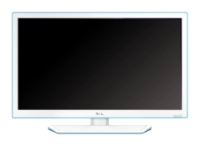ЖК-телевизор Saturn LED 19C | |||||
| |||||
Характеристики и обзор |
| P?s?n kylm?k?ynnistys huonolla bensapumpulla. |
| Интернет-магазин Fotos - сняли отличное видео-сравнение 6 серии телевизоров Samsung. Выбрать телевизор: купить телевизор магазины купить телевизор купить телевизор самсунг куплю телевизор самсунг где купить телевизор телевизор купить дешево какой телевизор купить телевизоры самсунг цены серии телевизоров самсунг телевизор самсунг смарт тв телевизор самсунг 32 телевизор самсунг 40 как настроить телевизор самсунг как подключить телевизор самсунг телевизор самсунг 32 дюйма телевизоры самсунг 2013 жк телевизоры самсунг телевизор samsung 40 жк телевизоры samsung led телевизоры samsung отзывы hd телевизоры samsung телевизор самсунг 6 лет телевизоры самсунг лед телевизоры самсунг телевизор самсунг 40 дюймов телевизор самсунг 6 серии диагонали самсунг телевизоров телевизор самсунг 8 настройка телевизора самсунг 3д телевизоры самсунг led телевизоры samsung телевизор samsung 3d телевизоры samsung ue купить телевизор samsung купить телевизор led телевизор жк купить купить телевизор самсунг смарт телевизоры самсунг телевизоры samsung отзывы smart samsung телевизоры 3d led телевизоры samsung телевизоры samsung цены телевизоры samsung smart tv телевизор samsung 32 серии телевизоров samsung телевизор led samsung ue телевизор samsung led 32 телевизор 46 samsung купить телевизор в интернет магазине купить телевизор samsung телевизор samsung full hd телевизоры samsung f samsung телевизоры 2013 |
| Following the discovery of the planet Neptune in 1846, there was considerable speculation that another planet might exist beyond its orbit. The search began in the mid-19th century and culminated at the start of the 20th with Percival Lowell's quest for Planet X. Lowell proposed the Planet X hypothesis to explain apparent discrepancies in the orbits of the gas giants, particularly Uranus and Neptune, speculating that the gravity of a large unseen ninth planet could have perturbed Uranus enough to account for the irregularities. Clyde Tombaugh's discovery of Pluto in 1930 appeared to validate Lowell's hypothesis, and Pluto was officially considered the ninth planet until 2006. In 1978, Pluto was found to be too small for its gravity to affect the gas giants, resulting in a brief search for a tenth planet. The search was largely abandoned in the early 1990s, when a study of measurements made by the Voyager 2 spacecraft found that the irregularities observed in Uranus's orbit were due to a slight overestimation of Neptune's mass. After 1992, the discovery of numerous small icy objects with similar or even wider orbits than Pluto led to a debate over whether Pluto should remain a planet, or whether it and its neighbours should, like the asteroids, be given their own separate classification. Although a number of the larger members of this group were initially described as planets, in 2006 the International Astronomical Union reclassified Pluto and its largest neighbours as dwarf planets, leaving only eight planets in the Solar System. Today, the astronomical community widely agrees that Planet X, as originally envisioned, does not exist, but the concept of Planet X has been revived by a number of astronomers to explain other anomalies observed in the outer Solar System. In popular culture, and even among some astronomers, Planet X has become a stand-in term for any undiscovered planet in the outer Solar System, regardless of its relationship to Lowell's hypothesis. Other trans-Neptunian planets have also been suggested, based on different evidence. As of March 2014, observations with the WISE telescope have ruled out the possibility of a Saturn-sized object out to 10,000 AU, and a Jupiter-sized or larger object out to 26,000 AU |
| Following the discovery of the planet Neptune in 1846, there was considerable speculation that another planet might exist beyond its orbit. The search began in the mid-19th century and culminated at the start of the 20th with Percival Lowell's quest for Planet X. Lowell proposed the Planet X hypothesis to explain apparent discrepancies in the orbits of the gas giants, particularly Uranus and Neptune, speculating that the gravity of a large unseen ninth planet could have perturbed Uranus enough to account for the irregularities. Clyde Tombaugh's discovery of Pluto in 1930 appeared to validate Lowell's hypothesis, and Pluto was officially considered the ninth planet until 2006. In 1978, Pluto was found to be too small for its gravity to affect the gas giants, resulting in a brief search for a tenth planet. The search was largely abandoned in the early 1990s, when a study of measurements made by the Voyager 2 spacecraft found that the irregularities observed in Uranus's orbit were due to a slight overestimation of Neptune's mass.[3] After 1992, the discovery of numerous small icy objects with similar or even wider orbits than Pluto led to a debate over whether Pluto should remain a planet, or whether it and its neighbours should, like the asteroids, be given their own separate classification. Although a number of the larger members of this group were initially described as planets, in 2006 the International Astronomical Union reclassified Pluto and its largest neighbours as dwarf planets, leaving only eight planets in the Solar System. Today, the astronomical community widely agrees that Planet X, as originally envisioned, does not exist, but the concept of Planet X has been revived by a number of astronomers to explain other anomalies observed in the outer Solar System. In popular culture, and even among some astronomers, Planet X has become a stand-in term for any undiscovered planet in the outer Solar System, regardless of its relationship to Lowell's hypothesis. Other trans-Neptunian planets have also been suggested, based on different evidence. As of March 2014, observations with the WISE telescope have ruled out the possibility of a Saturn-sized object out to 10,000 AU, and a Jupiter-sized or larger object out to 26,000 AU September 2014 |
| Lal Kitab Remedies Get Your Personal Copy of Magic of Lal Kitab - Horoscope + Predictions + Remedies (Uppay) at www.ShaniDev.Us Lal Kitab (Hindi: ??? ?????, Urdu: ???????, literally Red Book) is a set of five Urdu language books on Hindu astrology and palmistry, written in the 19th century, based on the Samudrika Shastra. Poetic verses with philosophy and hidden nuances form the core farmanns or upaya (remedy recommended) of the book. It is believed to have Persian origins and has led to field of remedial astrology known as Lal Kitab remedies, that is simple remedies for various planetary afflictions in the horoscope or birth chart, which have over the years become part of the folk traditions of the region, that includes North India and Pakistan. |
|
Просмотров: 2627 Ключевые слова:
Общая оценка Saturn LED 19C на TV-sovet.ru:
5
из
5
на основании
50 голосов.
|
Что спрашивают чаще всего после покупки |
|
Видеообзор Saturn LED 19C | |
        
| |
Отзывы о Saturn LED 19C |
Другие модели Saturn |
Взгляните | |||||
|
Попробуйте найти |




















